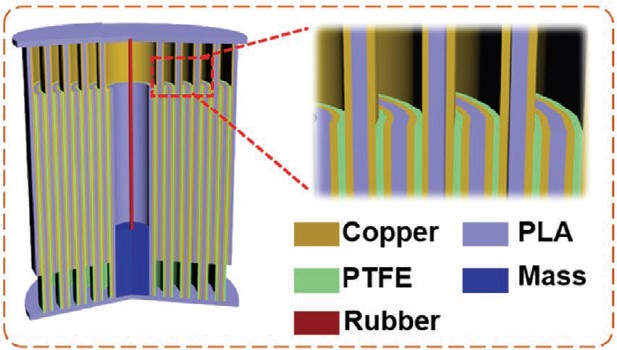During the forest fire season, fire departments rely on data from sensors in the field to give them an accurate picture of where outbreaks are occurring.
Generally these sensors are battery powered, and in the remote areas where the sensors are required, battery replacement is not a trivial matter.
Solar power sensors have been used for this type of application, but the dense foliage of some forests limits their usefulness. In this context, an American team have developed a device that transforms the energy of swinging branches into electrical energy that can be used to power a sensor.
The technology
The electrical current to power the sensors is generated via a phenomenon known as “triboelectricity”. If two materials have a different affinity for electrons, then when they come into contact a small voltage can arise. By cleverly engineering a system, this voltage can be used to generate an electric current.

This particular device contains multiple layers arranged in a cylindrical form (see above). The repeating copper and polymer layers are attached to springs.
The complete cylinder is hung from an object like a tree branch. When the branch moves, the device expands and contracts, causing the internal layers to rub past each other, generating electric current (see the video below).
Applications
“At a very low vibration frequency, the [device] can efficiently generate electricity to charge the attached supercapacitor in less than three minutes,” said lead author Changyong Cao.
As part of the work, the team showed that the device could be used to power both a thermometer and a carbon monoxide sensor, elements that are crucial to any bushfire warning system.
“As far as we know, this is the first demonstration of such a [device] as a forest fire detection system,” said Cao, “The self-powered sensing system could continuously monitor the fire and environmental conditions without requiring maintenance after deployment”.
Commercialization
A number of steps are required before this device can be widely used. Modifications are required to ensure that the device can survive in a wide variety of climates; at present the electricity generation has only been tested in a laboratory setting.
The team is hoping to have the necessary modifications made in the near future, so that a prototype can be tested in the field.
Reference: Yaokun Pang, et al. ‘Multilayered Cylindrical Triboelectric Nanogenerator to Harvest Kinetic Energy of Tree Branches for Monitoring Environment Condition and Forest Fire‘ Advanced Functional Materials (2020). DOI: 10.1002/adfm.202003598
Quotes adapted from press release

















